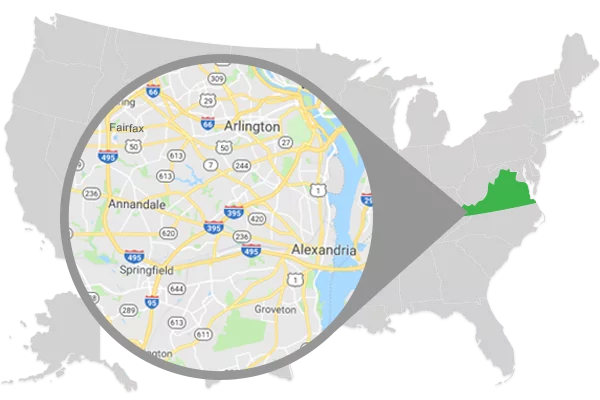How Google and an Australian app are making identifying wildlife easier
What is the Wildlife Insights website?
Have you ever wondered what the animal lurking outside your home was and haven’t been able to identify it? Or what that insect buzzing around may be? A website called Wildlife Insights was launched by Google and allows its users to identify wildlife simply by uploading camera trap images. A camera trap is a motion activated and remote operated camera with infrared sensors. The website is a database of over 4.5 million camera trap images ranging from 1990 to present day and enables users to explore the various types of creatures based on their location. The website works by allowing individuals to upload their camera trap images and the software automatically analyzes the photo and identifies the species of wildlife using machine learning technology. Instantly the user is able to know what they are looking at and have some information readily available to them about the species. This helps people know if the animal is dangerous, venomous or poisonous and gives them information about the behaviors and temperament of the creatures.
What is the goal of the site and who is it for?
The main goal of this website is to support conservation efforts and help to recover wildlife populations, but the website can be used by anyone to help them identify wildlife and educate themselves. Wildlife Insights can be utilized by a wide array of individuals ranging from land managers to scientists and the government to the general public. Land managers can use the site to make informed decisions about the wildlife and land they are managing. The government receives information about the health of the species populations. Scientists are able to make predictions about potential threats to populations and climate change. The general public can view photos from the database of camera trap images from different regions of the world and educate themselves on the various species.
With so many positive ways this site is able to make an impact on animals, there are some potential drawbacks. One concern of the users was that Wildlife Insights would allow poachers to know the location of endangered species. Wildlife Insights actually established a setting that allows for the location of protected species to not be disclosed to the public which makes it difficult for poachers and any person or group of people wanting to do intentional harm to the animal to find them. Another potential drawback is the misidentification of the creature. Knowing how artificial intelligence works and how it interacts with the site is important in understanding how species are properly identified.
How does the site work?
Wildlife Insights is currently beta testing and accounts must be approved before they are activated. Using the TensorFlow framework, two tasks are performed by Google trained artificial intelligence models. The two tasks are blank image filtering and species classification. In blank image filtering the AI models will filter out and delete any images that do not contain animals. This is a task that would take an individual person a great deal of time to complete. The AI models are tuned to accurately identify blanks or the images without animals in them. Additionally, the models are trained to recognize and classify the species by matching the photo to one of their 8.7 cataloged images that have been collected over a 10 year timespan.
What is Critterpedia
A mobile application out of Australia has similar features to Wildlife Insights called Critterpedia. It allows its users to take pictures of various species of wildlife and be able to identify them instantly from the image they took that is analyzed by their artificial intelligence software. Unlike Wildlife Insights, the images do not have to be from camera traps and anyone can upload images. The mobile app is primarily used by Australian citizens and visitors to Australia to identify poisonous and venomous animals to avoid. The application comes in handy because Australia is home to the most venomous snakes in the world. Australia also has the third largest population of poisonous and venomous wildlife with 66 identified species just behind Brazil with 79 species and Mexico with 80.
The objective of Critterpedia is to inform the general public about the critters they may encounter in Australia and how people and wildlife can coexist. The application works to identify snakes and spiders in Australia and aids in education efforts and informs its users on the risks and dangers associated with interacting with the wildlife. The app does more than just identifies the creature, users gain access to a wildlife encyclopedia of species native to Australia. Critterpedia also has emergency resources to help users who have been stung or bit by a venomous animal or insect. Critterpedia is still undergoing testing but they hope to add virtual and augmented reality elements to their app. Critterpedia was funded using a Kickstarter campaign and is offering early access to a select few users while its application is still undergoing further testing.
Why are these resources beneficial to wildlife removal
While these resources were developed with conservation efforts in mind, wildlife removal and pest control services can benefit from these technological advances too. It can be difficult for people to identify different species, especially when it comes to insects. For example, knowing the difference between one species of bees and another can save people a lot of time and frustration and can help them get the assistance they need with their situation quicker and easier. Some people also may have a difficult time differentiating one rodent species from another. When the client is informed, it helps the removal process run smoother. While Critterpedia is only being used and recognized in Australia, Wildlife Insights is available for users all over the world including Northern Virginia. However Wildlife Insights is only accepting everyday, general public users at this time and they can get started using their beta version for free once they are approved by Wildlife Insights.
What is the future for AI in wildlife
More and more websites and applications are being created and tested to aid in the efforts of wildlife conservation, identification and education. There are other websites that allow for wildlife to be identified by sound rather than their image. Artificial intelligence is going to be used more in everyday life and will save people time who once had to manually enter information and data and identify wildlife on their own. AI is the future for a lot of companies moving forward and will be incorporated in many ways. For now, it is best to contact a pest control specialist or a wildlife removal service if you have any kind of problem with insects, pests or wild animals on your property to ensure they are taken care of appropriately. For more information, contact us today.












